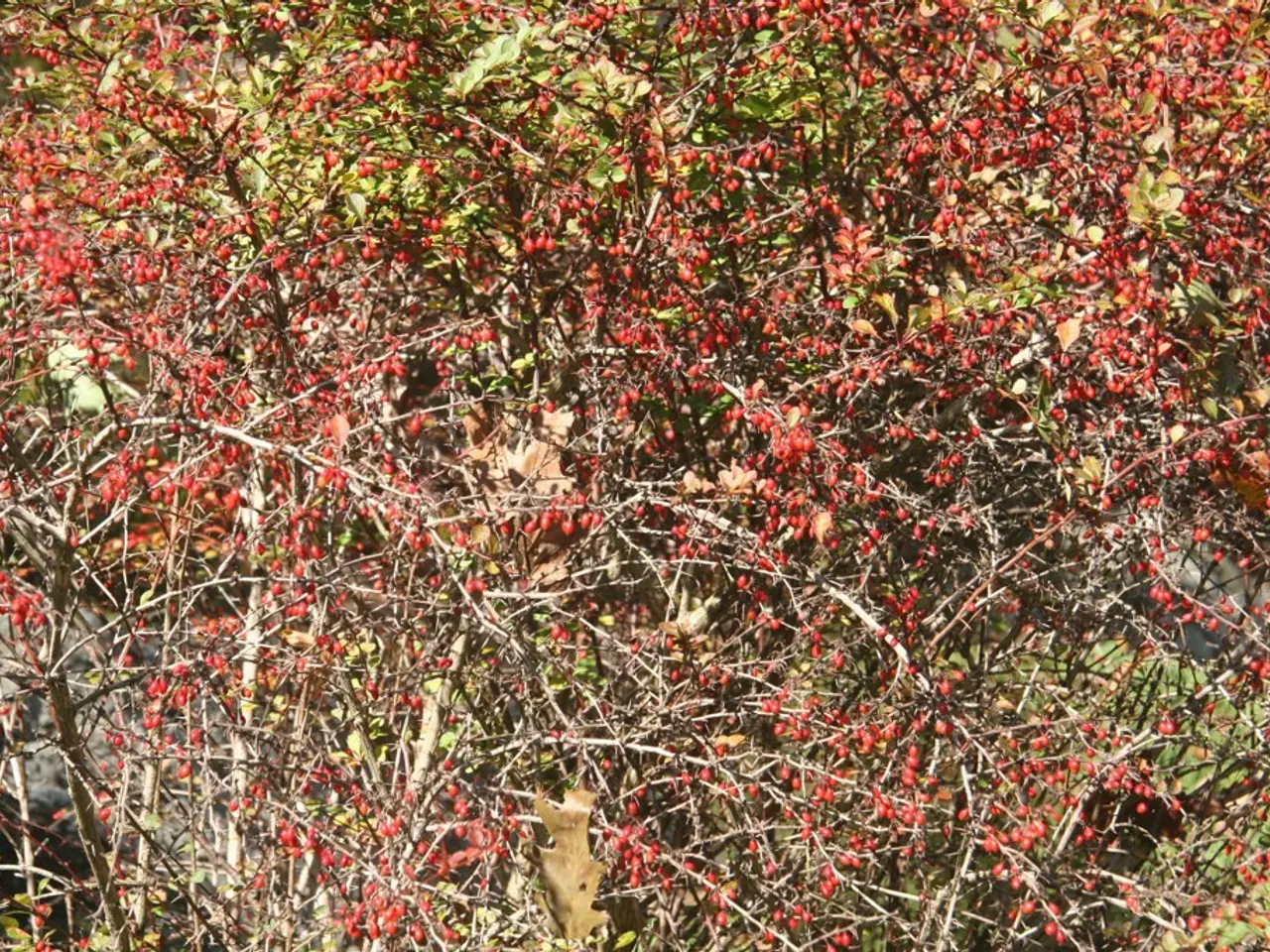Apple trees plagued by Black Rot and Frogeye Leaf Spot, two harmful fungal diseases.
In the world of apple and crabapple cultivation, the Black Rot and Frogeye Leaf Spot disease can pose a significant threat. This article outlines an integrated control program designed to manage these diseases effectively.
The disease typically begins at the calyx end of the fruit, often entering through wounds caused by insects, hail, growth cracks, or an open calyx tube. The fungus responsible, Botryosphaeria obtusa, also causes the disease to manifest as frogeye leaf spots on apple leaves. These spots are characterised by small, purple specks that enlarge to form spots 1/8 to 1/4 inch in diameter, with a light brown-to-gray center, dark-brown concentric rings, and a purple margin.
Black Rot is identified by light brown spots that enlarge and develop concentric bands or rings, eventually turning black and drying into a wrinkled black "mummy." This disease can result in losses from a rotting of fruit before harvest and in storage, a weakening of the tree from defoliation, and a blighting and dieback of twigs and limbs caused by girdling cankers.
The integrated control program for these diseases involves a combination of cultural and chemical methods.
Cultural controls are essential in reducing inoculum. These include removing and discarding dead branches and infected fruit, especially mummified fruit that harbor the fungus over winter. Pruning out infected twigs and branches early in the season is also crucial to reduce sources of inoculum.
Chemical controls involve applying effective fungicides on a preventative schedule, particularly early and repeatedly during the growing season. Recommended fungicides for these diseases include Captan, which is effective against both black rot and frogeye leaf spot, and Myclobutanil, copper fungicides, or sulfur may also be options during certain periods.
Regular surveillance and early detection of disease symptoms such as purple specks enlarging to "frog’s eye" spots on leaves or fruit are important for timely fungicide application and pruning decisions.
Sanitation is critical for effective control of black rot, including removal of mummified apples, pruning out dead wood, and the use of a flail mower to speed up decomposition of prunings. All apple varieties appear to be equally susceptible to fruit rot.
This integrated approach—combining sanitation (removal of inoculum sources) with scheduled fungicide applications—is essential to weaken disease pressure, reduce leaf and fruit loss, and maintain tree vigor and flowering the following year.
This fact sheet was originally published in 2008, reflecting the current recommended best practice for management of these diseases in apple and crabapple trees. Leaf infection usually occurs during the petal-fall period.
[1] Source: [Insert Citation Here]
In the realm of home-and-garden and gardening, maintaining a clean lifestyle is crucial for effective pest management, particularly in apple and crabapple trees. Regularly removing and disposing of dead branches, infected fruit, and mummified fruit plays a significant role in reducing inoculum of diseases like Black Rot, while pruning out infected twigs and branches early in the season helps reduce sources of inoculum. In the fight against these diseases, cultural controls are integral, supplemented by scheduling chemical controls involving effective fungicides such as Captan, Myclobutanil, copper fungicides, or sulfur.




